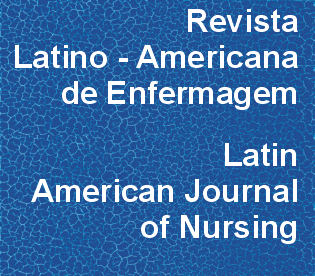Adesão à terapêutica anti-retroviral por indivíduos com HIV/AIDS assistidos em uma instituição do interior paulista
DOI:
https://doi.org/10.1590/S0104-11692005000500005Palavras-chave:
HIV, síndrome de imunodeficiência adquirida, terapêutica, anti-retroviraisResumo
A adesão indevida à terapêutica anti-retroviral acarreta sérios agravos aos indivíduos com aids. Assim, objetivou-se identificar os determinantes (facilitadores/dificultadores) da adesão aos anti-retrovirais atribuídos pelos indivíduos com aids, seguidos em um hospital universitário do interior paulista. Constituíram sujeitos 200 usuários de anti-retrovirais há pelo menos 6 meses. Os dados foram coletados mediante entrevista semi-estruturada, individual e analisados quali-quantitativamente. Dos participantes, 59% eram do sexo masculino; idade média 38,2 anos, 51% cursaram ensino fundamental incompleto; 50,5% não exerciam atividade remunerada. Usavam anti-retrovirais em média há 5 anos. A quantidade diária de comprimidos variou de 3 a 24. As principais dificuldades apontadas: sabor, tamanho, quantidade, odor dos comprimidos (40%); efeitos colaterais intensos (14,4%); fatores psicológicos (13,7%); diferentes horários de medicação (10,8%). Quanto às facilidades, destacam-se horários coincidentes dos comprimidos (26,2%); nenhuma facilidade (16,4%), ingestão condicionada a algum hábito (16%). A enfermagem deve incrementar ações de vigilância supervisionada e educacionais interventivas.Downloads
Os dados de download ainda não estão disponíveis.
Downloads
Publicado
2005-10-01
Edição
Seção
Artigos Originais
Licença
Os direitos autorais são de propriedade exclusiva da revista, transferidos por meio da Declaração de Transferência de Direitos Autorais (presente no Formulário Individual de Declarações) assinada pelos autores. Para a utilização dos artigos, a RLAE adota a Licença Creative Commons, CC BY-NC Atribuição não comercial (resumo ou código completo da licença). Com essa licença é permitido acessar, baixar (download), copiar, imprimir, compartilhar, reutilizar e distribuir os artigos, desde que para uso não comercial e com a citação da fonte, conferindo os devidos créditos autorais a Revista Latino-Americana de Enfermagem. Nesses casos, nenhuma permissão é necessária por parte dos autores ou dos editores.Como Citar
Gir, E., Vaichulonis, C. G., & Oliveira, M. D. de. (2005). Adesão à terapêutica anti-retroviral por indivíduos com HIV/AIDS assistidos em uma instituição do interior paulista. Revista Latino-Americana De Enfermagem, 13(5), 634-641. https://doi.org/10.1590/S0104-11692005000500005



